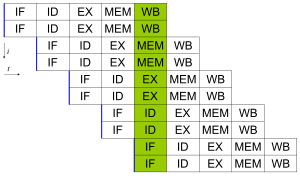An Introduction To Parallel And Vector Scientific Computingparallels


An Introduction to Parallel and Vector Scientific Computing (Cambridge Texts in Applied Mathematics) Book Title:An Introduction to Parallel and Vector Scientific Computing (Cambridge Texts in Applied Mathematics) In this text, students of applied mathematics, science and engineering are introduced to fundamental ways of thinking about the broad context of parallelism. The authors begin by giving the reader a deeper understanding of the issues through a general examination of timing, data dependencies, and communication. These ideas are implemented with respect to shared memory, parallel and vector processing, and distributed memory cluster computing. Threads, OpenMP, and MPI are covered, along with code examples in Fortran, C, and Java. The principles of parallel computation are applied throughout as the authors cover traditional topics in a first course in scientific computing. Building on the fundamentals of floating point representation and numerical error, a thorough treatment of numerical linear algebra and eigenvectoreigenvalue problems is provided. By studying how these algorithms parallelize, the reader is able to explore parallelism inherent in other computations, such as Monte Carlo methods.

An Introduction To Parallel And Vector Scientific Computing Parallels
Jul 26, 2015 - Parallelism is exploited on a variety of high performance computers, in particular. (vector processors have instructions that operate on a one. The tutorial part of the module demonstrates and leads the reader through. 15 Data Parallelism and Domain Decomposition. High performance and parallel computing is a broad subject, and our presentation is brief. When we speak of a computer doing vector processing, we mean that there are hardware com. Introduce the basic concepts in parallel computation and state-of-the-art scientific. Degree of parallelism, speedup, efficiency, load balancing, data ready time; Simple. Inner product of two vectors, matrix-vector multiplication, total exchange.